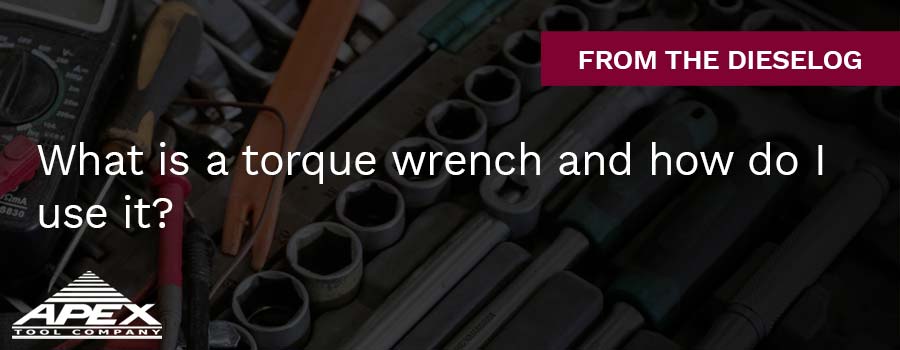Blog
What is a torque wrench and how do I use it?
A large variety of torque wrenches are available with different options such as shapes, sizes and torque delivery mechanisms. Therefore, before selecting a torque wrench, it is necessary to understand the features of the major options and to select the tool that meets your specific fastening application. Measuring, controlling or tightening of fasteners is imperative in the maintenance and manufacturing world to achieve production efficiency and quality control. A torque wrench is more of a precision tool and you must treat it and maintain it just as you would a measuring instrument. These are some major types of torque wrenches:

Cam-Over Torque Wrenches are suitable for eliminating over-torqueing. These are highly suitable for production floors and maintenance applications where over-torque conditions cannot be tolerated.
Break-Over Torque Wrenches actually limit the torque applied. These wrenches indicate that the desired torque has been reached by deflecting by 20-90 degrees.
Electronic Torque Wrenches are good for testing fasteners as well as for joint validation, auditing and production. These are available with and without memory, in torque and angle/torque models.

Click Torque Wrenches are the most popular type of products used throughout the world. As the name suggests, these wrenches indicate that the desired torque is reached by clicking.
Dial Torque Wrenches are mostly used as quality control instruments for verifying or monitoring torque. You can set memory pointers to provide the limits for accurate readings on the dial.
A torque wrench can have one of three basic styles of indicating that torque is achieved. This is either by a “slipâ€, a “break†or a “clickâ€, with each style having a specific purpose and utility. Therefore, when selecting a torque wrench, it is important to select one that will be proper for the job.
The most common type of torque wrench is the click type. These typically emit a loud click when the set torque is achieved. However, most click type wrenches emit the click after about three degrees once the set torque is reached and then they become positive. This may lead to over-torque conditions, and the operator has to be careful to stop pulling as soon as he hears or feels the click sound.
For limiting the amount of torque applied, break-over wrenches are the most suitable. These deflect by 20-90 degrees and stop delivering torque, indicating that set torque is achieved. Some have to be reset manually, others may reset automatically.
For maintenance and production floor applications where over-torque conditions cannot be tolerated, the best wrenches you can use are the Cam-Over wrenches. These have a ball and lobe design that allows the wrench to slip free when the set torque is achieved. That eliminates any chance of over-torque. Since these wrenches are not dependent on the length, you cannot over-tighten using length extenders such as a pipe. Therefore, the operator cannot influence the torque equation and it is easy to achieve repeatable and accurate results as compared to a standard click type wrench.
While using torque wrenches, it is important to learn about setting verification and calibration at certain intervals. Preventive maintenance is essential for these wrenches.

